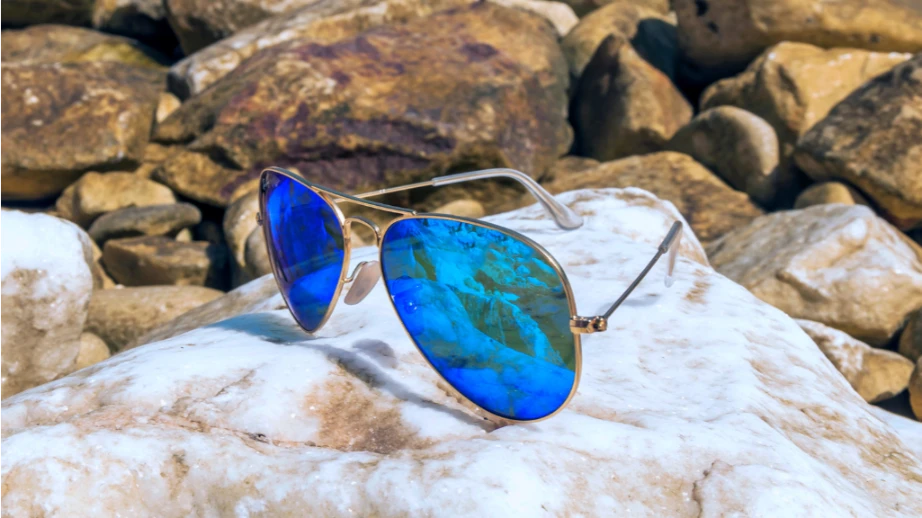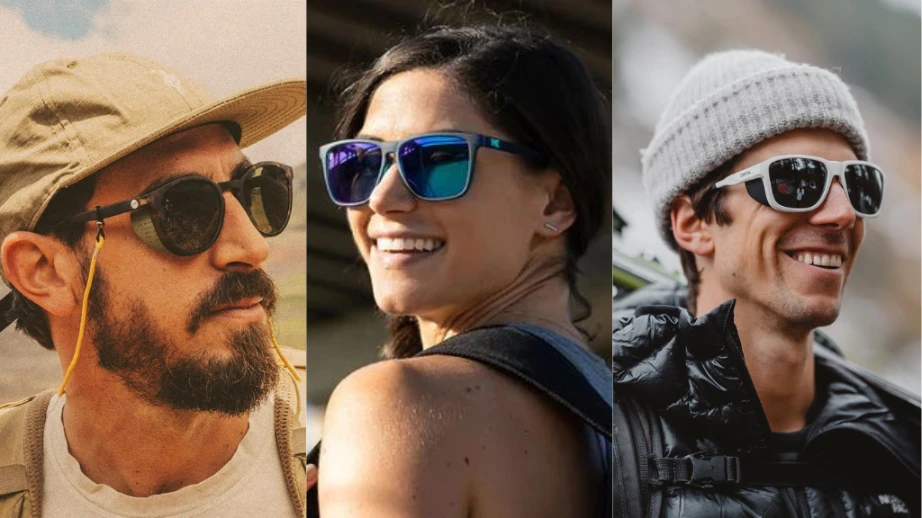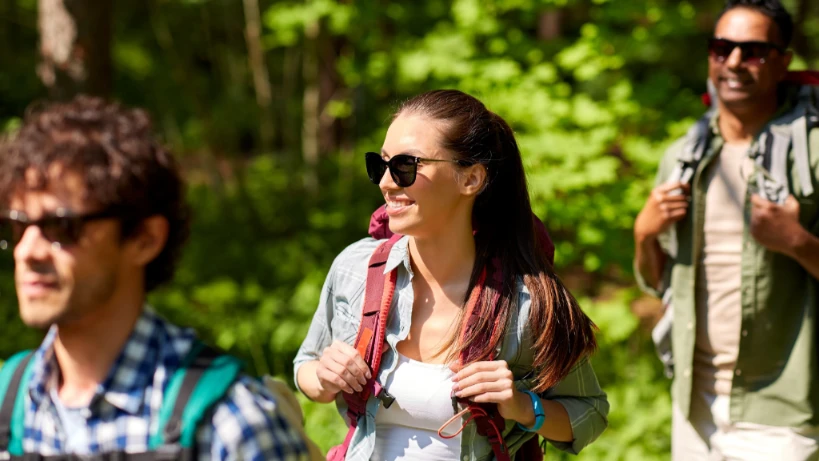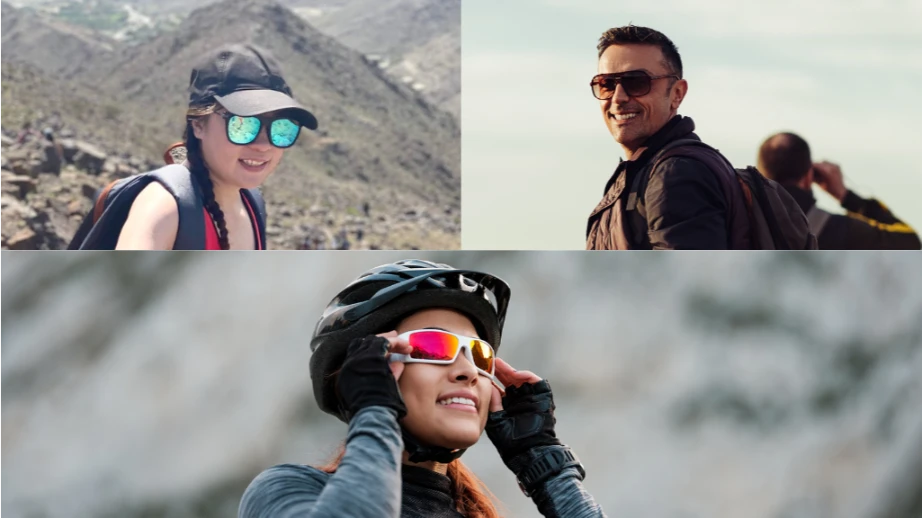Many hikers wonder whether they need to shell out for an additional pair of sunglasses for the trails if they already own a pair of Aviators, one of the most popular Ray-Ban’s models.
By the end of this article, you’ll have a clear idea of whether these iconic sunglasses are a good choice for hiking.
Are Aviators Good for Hiking?
Aviators are generally not good for hiking. They aren’t quite up to the task when it comes to staying put, keeping clear, and protecting you from the wind.
For those reasons, I prefer specialized sunglasses designed for hiking such as the Smith Embark ChromaPop Glacier Sunglasses. Priced at $215, they are still cheaper than higher-end Aviators made by Ray-Ban or Randolph, yet they offer unique features, such as the removable and ventilated side shields or ChromaPop, that Aviators simply can’t match.
However, if you already own a pair of Aviators and are hesitant to purchase another pair, they can still be used for hiking as long as your hike is:
- Short in duration – less than 2 hours
- Moderate in intensity and conditions – not too strenuous and, most importantly, not windy
- Low in altitude – below 6,000 feet
In those cases, Aviators can offer decent protection from the sun while still being stylish. Let’s take a closer look at the pros and cons of these sunglasses to fully understand their usefulness for hiking.
Pros of Wearing Aviators While Hiking

Style and Versatility
Aviators have been around since the 1930s. They’ve stood the test of time, evolving from military gear to a fashion staple.
What really sets aviators apart for us hikers is their incredible suitability for all face shapes. With a lens height of about 50mm and width of 58mm on average, aviators strike the perfect balance. They’re not too big, not too small, but just right.
Whether your face is round, oval, square, or heart-shaped, these sunglasses will not only fit but will enhance your features.
UV Protection
Most aviator sunglasses offer 100% UV protection. This is super important because in some places the UV levels are off the charts, especially at higher elevations above 2,000 meters.
Why does this matter? Prolonged exposure to these rays can harm our eyes in ways we might not even notice until it’s too late – cataracts, macular degeneration, and other conditions can be all caused by UV exposure.
That’s why I always make sure my aviators are up to the task, blocking out every single one of harmful rays.
Polarization Options
If you’ve ever found yourself squinting against the glare of a beautiful but painfully bright water body or a snowy path, you know how annoying it is. Polarized lenses in your Aviators can reduce that glare and block up to 99% of visible light. The result? You get crisp and clear vision, making your hike safer and more enjoyable.
Cons of Wearing Aviators While Hiking
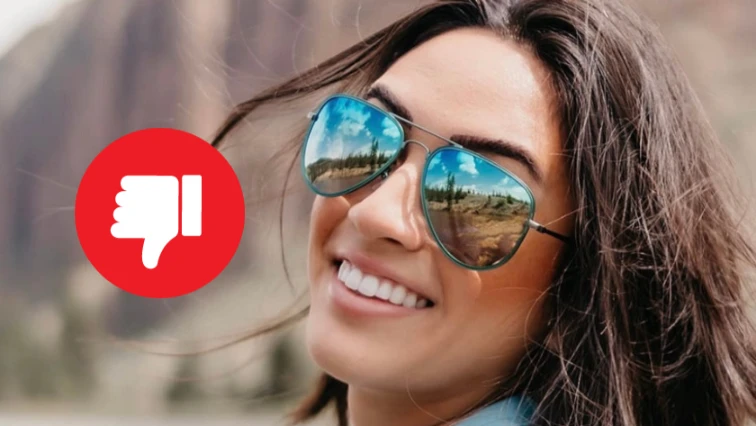
Lack of Wraparound Protection
Most aviator sunglasses have what’s called a curvature rating of 6. In simple terms, this means they’re somewhat flat compared to other types of eyewear. This flatness affects how much of your peripheral vision gets protected from the sun’s rays and from the elements around you.
Now, compare this to sports sunglasses, which often boast curvature ratings of 8 or even 9. These glasses block out not just direct sunlight but also annoying side intrusions. This means better visibility, less squinting, and more enjoying views.
With aviators, because of that inadequate side protection, this debris can easily sneak past your glasses and right into your eyes. And if you’ve ever been caught in conditions with wind speeds exceeding 15 mph, you know how uncomfortable and even dangerous this can be.
Durability Concerns
Aviators’ stylish thin metal frames look good but they’re surprisingly easy to bend or even break if they take a tumble or get squished in your pack.
And let’s not even start on the lenses. Unlike their sports-specific cousins made from tough polycarbonate materials, aviator lenses can scratch up in no time if you’re not careful, although this depends largely on the brand and level of quality.
What can you do to keep your cool and protect your aviators?
- Invest in a Hard Case: This might seem like a no-brainer, but you’d be surprised how many folks toss their sunglasses into their pack and call it a day. A hard case is your first line of defense against accidental squishes and drops.
- Choose Aviators with a Stronger Build: Some brands know we love to take our style into the wild, so they’ve beefed up their designs with stronger materials and slightly thicker frames without compromising on that classic look.
- Carry a Repair Kit: A small eyeglass repair kit can help you fix a loose screw or straighten out a minor bend in no time. They’re tiny enough to slip into your pack without a second thought.
- Opt for Scratch-Resistant Lenses: When you’re picking out your next pair of aviators, keep an eye out for options with scratch-resistant coatings. They might cost a bit more, but they’re worth it for the added durability.
Conclusion
Aviators do bring a lot to the table. They’ve got style, versatility, and they offer enough UV protection and polarization to keep rays at bay. But when we’re talking about strapping on the boots and hitting less-traveled paths, they can’t quite match up with the specialized sunglasses designed with just that in mind.
My advice is to pack a pair of durable sunglasses with higher curvature ratings alongside your aviators. This way, you get the best of both worlds. You can enjoy the hike with the right gear that keeps your eyes protected and looking effortlessly cool at the same time.
However, if you have to choose between style and functionality, always prioritize the latter. It’s a rule that applies not just to sunglasses, but to all gear and equipment when it comes to hiking.

Lukas Heller
Hey there! I’m Lukas, co-founder of BigfootHiking.com, alongside my adventurous wife Martha. Originally from Germany, I landed in Phoenix, Arizona, in 2015, where I’ve been scouting out new trails ever since (though they’re getting scarce!). By day, I’m a software developer, but my heart belongs to hiking – I’m always plotting our next trip. When I’m not coding or on the trails, you’ll find me hanging out with our Pit Bull, Zeus.

